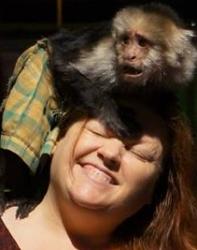 Perhaps no character from children’s stories has appealed to such a wide audience as Alice and her Adventures in Wonderland (along with the sequel, Through the Looking Glass and What Alice Found There). What is the allure of Alice? The games of logic put forth by a mathemetician like Charles Dodgsen elevates the book to something adults can appreciate. The original illustrations appeal to the masses. But there is something in the characters and the narrative itself. Perhaps we all want to fall down the rabbit’s hole. But I think it may have more to do with the innocent charm of Alice, with her perfectly tied ribbons and coiffed blonde hair. It’s obvious why kawaii has adopted her as a role model. There is simply no one like Alice. LACMA’s current exhibit, In Wonderland, was the inspiration for a film fest taking place this weekend, Adventures in Wonderland: Alice and Other Lost Girls in Fantastic Worlds .
Perhaps no character from children’s stories has appealed to such a wide audience as Alice and her Adventures in Wonderland (along with the sequel, Through the Looking Glass and What Alice Found There). What is the allure of Alice? The games of logic put forth by a mathemetician like Charles Dodgsen elevates the book to something adults can appreciate. The original illustrations appeal to the masses. But there is something in the characters and the narrative itself. Perhaps we all want to fall down the rabbit’s hole. But I think it may have more to do with the innocent charm of Alice, with her perfectly tied ribbons and coiffed blonde hair. It’s obvious why kawaii has adopted her as a role model. There is simply no one like Alice. LACMA’s current exhibit, In Wonderland, was the inspiration for a film fest taking place this weekend, Adventures in Wonderland: Alice and Other Lost Girls in Fantastic Worlds .
Kicking off with Jan Svankmeyer’s classic Alice, the film festival will get off to a trippy start. Practically a silent movie save for a few strange moments (“Said the white rabbit”), Svankmeyer uses stop-motion and live actors against a backdrop of taxidermy, bones, jars of screws, and clockworks (He was steampunk before steampunk was cool).
Alice is followed by the obscure Valerie and Her Week of Wonders, a world of superstition, symbolism and surrealism brought about by the onset of the character’s first menses. Its original score has been replaced “by a psych-rock supergroup that calls itself The Valerie Project.”
The first work by Vera Chytilova, an avant-garde Czech film director, Daisies, is a comedy presenting two wild teenage girls on a rebellious spree. We Eat the Fruit of the Trees of Paradise is another hallucinatory experimental film that tells the bible story of creation. The films “led to the filmmaker being banned from working for seven years by Czech censors.”
Paramount Pictures 1933 “Alice” is a nostalgic melding of both Through the Looking Glass and Wonderland. The film boasts expressionistic sets, groundbreaking special effects, and an all-star cast. Disney’s 1951 animated classic is the most familiar and palatable Alice, which also makes it the most bland. In the plus column, it is Alice, it’s short, and you will remember most of the songs from childhood. The event ends on the 14th with “Bunin’s long-unavailable puppet production…released in 1951.”
This series is co-presented by The Cinefamily.
Events in this Series

Alice April 6, 2012 | 7:30pm

Valerie and Her Week of Wonders April 6, 2012 | 9:05pm

Alice in Wonderland April 7, 2012 | 5:00pm

Daisies / Fruits of Paradise April 7, 2012 | 7:30pm

Alice in Wonderland April 14, 2012 | 5:00pm





BUN(Y)IN PUPPETS! OUCH MY TOE HURTS!
For Alice maniacs…who like to read…I suggest the recent:
Alice I Have Been by Melanie Benjamin for the story behind the character (although fictionalized). for a look at Mr. Carroll, I’d suggest: “The Mystery of Lewis Carroll,” by Jenny Woolf
I could only get through about half Jan Svankmeyer’s “Alice”! I’d love to see the 1933 version.